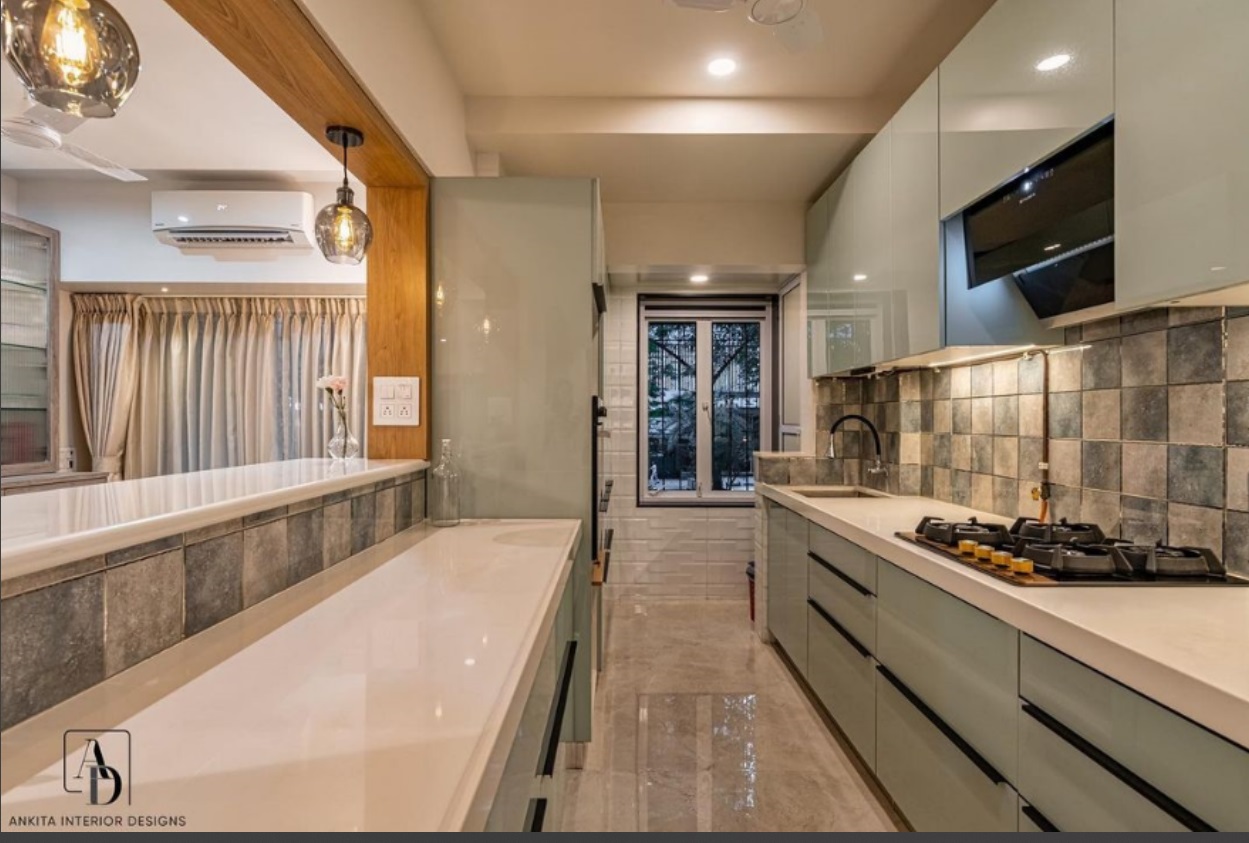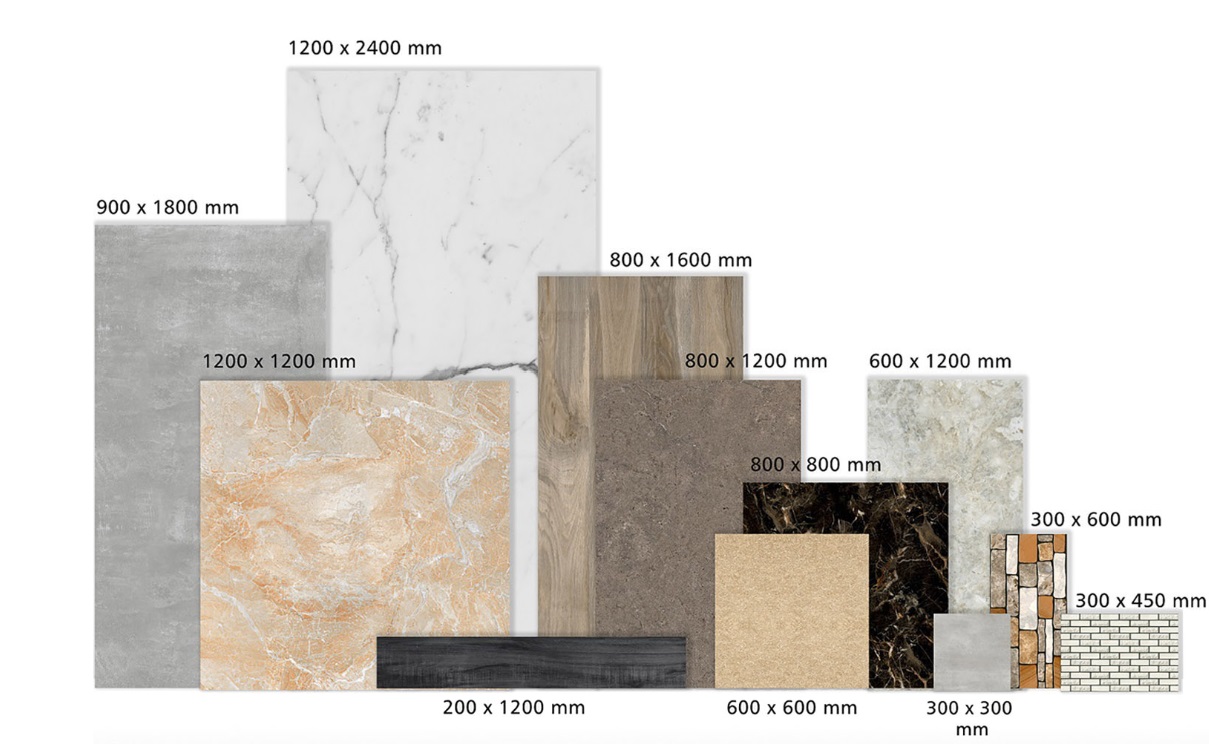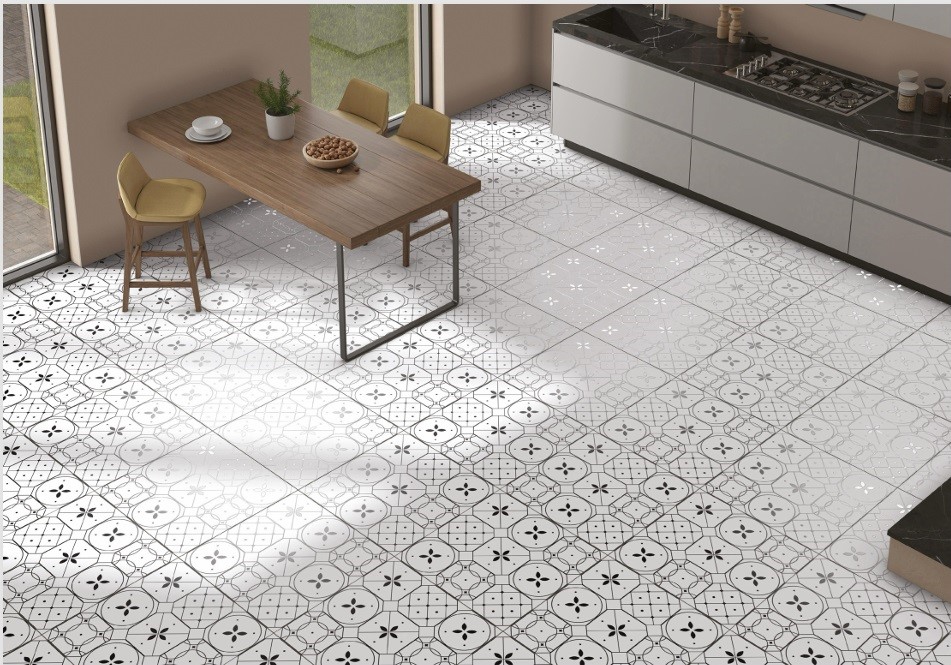kitchen tiles are made from a variety of materials, including glass, ceramic, stone, and even metal. They are often used as a decorative element in kitchens, adding a pop of colour or an intricate design to a backsplash, a wall, or a floor.
Key charactrestics of kitchen tiles;
1) Water-Resistance
2) Stain and Chemical Resistance
3) Durable
4) Aesthetic Appeal
Kitchen tiles can be stain-resistance, but not all are entirely stain - proof.The level of stain resistance depends on the type of tile and its surface finish .
For areas in the kitchen that are prone to spills,such as countertops or backsplashes,it is essential to choose tiles with a high level of stain resistance and to maintain them properly.
Regular cleaning and sealing will help keep them looking new and free from stains.
There are many reasons why laying tiles in a kitchen can be important, including:
Hygienic
Tiles are easy to clean and maintain, and they're resistant to water damage, mold, and germs. This makes them ideal for wet areas like kitchens, where spills and messes are common.
Durable
Tiles can withstand heavy foot traffic and pets, and they can last for decades.
Budget-friendly
Tiles are generally more affordable than other flooring options, like natural stone or hardwood.
Aesthetic value
Tiles come in a wide range of colors, patterns, and sizes, and they can add aesthetic value to your kitchen. For example, you can use a backsplash to add wow factor to your space, or you can incorporate painted walls with tiles to create a pleasing appearance.
Kitchen Tiles are Available in Different Sizes and Thickness
By Size
100mm x 100mm, 200mm x 200mm, 300mm x 300mm, 400mm x 400mm,
600mm x 300mm, 600mm x 600mm, 1200mm x 300mm, 1200mm x 600mm
800mm x 1600mm, 1200mm x 1800mm.
By Thickness
9.5 mm, 10mm, 12mm, 13mm, 15mm, 16mm
The choice between smaller and larger tiles for a kitchen depends on several factors, including aesthetics, practicality, and personal preference. Here’s a breakdown of why smaller tiles might be considered better in some situations:
Advantages of Smaller Tiles:
Design Flexibility:Smaller tiles offer more design options. They can be arranged in intricate patterns, mosaics, or combinations, which allows for greater creativity and customization.
Easier Installation:Smaller tiles can be easier to handle and cut, making them a good option for DIY projects or complex areas like backsplashes and corners.
Reduced Grout Lines:When properly installed, smaller tiles can result in a more uniform and less noticeable grout pattern compared to larger tiles. This can be especially beneficial in terms of aesthetics and maintenance.
Slip Resistance:Smaller tiles often provide more grout lines, which can increase slip resistance—a useful feature in areas prone to spills and wet conditions.
Visual Interest:Smaller tiles can create a more textured look and add visual interest to a kitchen. This can be particularly appealing in backsplashes or feature walls.
Less Visible Damage:In the event of a tile cracking or chipping, smaller tiles might be less noticeable and easier to replace individually compared to larger tiles.
Considerations for Larger Tiles:
Fewer Grout Lines:Larger tiles mean fewer grout lines, which can create a cleaner, more seamless look. This might be preferred in modern or minimalist designs.
Easier to Clean:With fewer grout lines, larger tiles can be easier to clean and maintain since there’s less grout to scrub.
Perceived Space:Larger tiles can make a space appear larger and more open, which can be advantageous in smaller kitchens.
Fewer Joints:Fewer joints mean there’s less opportunity for grout to stain or get dirty, which can be beneficial in high-traffic areas.
Ultimately, the best choice depends on the specific needs of your kitchen and your design preferences. Both small and large tiles have their unique advantages, so consider factors like the size of the space, your style preferences, and the practical aspects of maintenance and installation when making your decision.
Tiles can vary significantly in their heat resistance depending on the type of tile and its intended use:
Ceramic Tiles:
General Heat Resistance: Ceramic tiles are moderately heat-resistant and can withstand typical kitchen heat levels. They are commonly used for backsplashes and countertops.
Limitations: While ceramic tiles can handle occasional heat from cookware, they are not impervious to extreme temperatures or direct contact with very hot objects. Using trivets or heat pads is advisable to prevent potential damage.
Porcelain Tiles:
General Heat Resistance: Porcelain tiles are more heat-resistant than standard ceramic tiles. They are fired at higher temperatures, making them more durable and suitable for areas with higher heat exposure.
Limitations: Like ceramic tiles, they can tolerate regular kitchen heat but should be protected from direct contact with extremely hot items.
Natural Stone Tiles (e.g., Granite, Marble):
General Heat Resistance: Natural stone tiles, especially granite, have good heat resistance and are suitable for kitchen surfaces. They can handle typical kitchen heat but can be damaged by sudden, intense temperature changes.
Limitations: Marble is more sensitive to heat and can be more prone to damage compared to granite. It's still a good idea to use trivets or pads to protect the surface.
Glass Tiles:
General Heat Resistance: Glass tiles have moderate heat resistance but are more susceptible to thermal shock compared to ceramic or porcelain. They can handle everyday kitchen temperatures but might crack if exposed to rapid temperature changes.
Limitations: Direct exposure to very high heat or sudden temperature changes can cause glass tiles to crack.
Metal Tiles:
General Heat Resistance: Metal tiles, such as those made from stainless steel, can handle high temperatures and are often used in backsplashes and other heat-prone areas.
Limitations: They can get hot to the touch and may require regular cleaning to maintain their appearance.
General Tips for Managing Heat with Tiles:
Use Protective Measures:
For all types of tiles, using trivets, heat pads, or other protective measures can help prevent heat damage and maintain the longevity of the tile surface.
Avoid Direct Contact:
Avoid placing very hot pots, pans, or dishes directly on the tiles. Instead, use protective barriers to shield the surface.
Consider the Tile’s Purpose:
Choose tile types based on their intended use. For areas that experience higher temperatures, such as near stoves or ovens, opt for tiles with higher heat resistance.
In summary, while most tiles can handle typical kitchen heat, extreme or sudden temperature changes can cause damage. Using protective measures and selecting the right type of tile for your specific needs will help ensure durability and maintain the appearance of your kitchen surfaces.
When comparing granite to tiles, it’s important to consider the context of your specific needs and preferences. Both materials have their own advantages and disadvantages, and the choice often depends on factors such as the application, budget, and desired look
Conclusion:
Granite is a fantastic choice for those seeking a durable, high-end surface with a unique appearance, and who don’t mind the higher cost and maintenance involved. It’s especially suitable for countertops and high-traffic areas where durability is crucial.
Tiles offer versatility, affordability, and a range of styles that can suit various applications. They are a practical choice for those looking for a cost-effective solution with the flexibility to fit different design needs.
Ultimately, the choice between granite and tiles depends on your specific requirements, budget, and aesthetic preferences. Each material has its strengths, so consider what’s most important for your project before making a decision.









